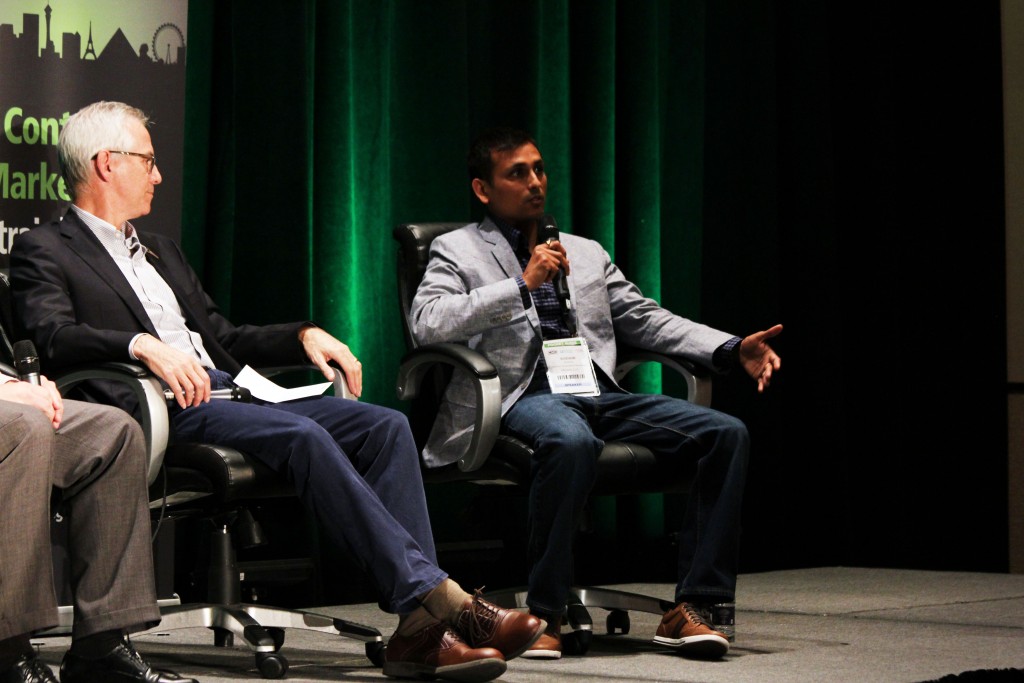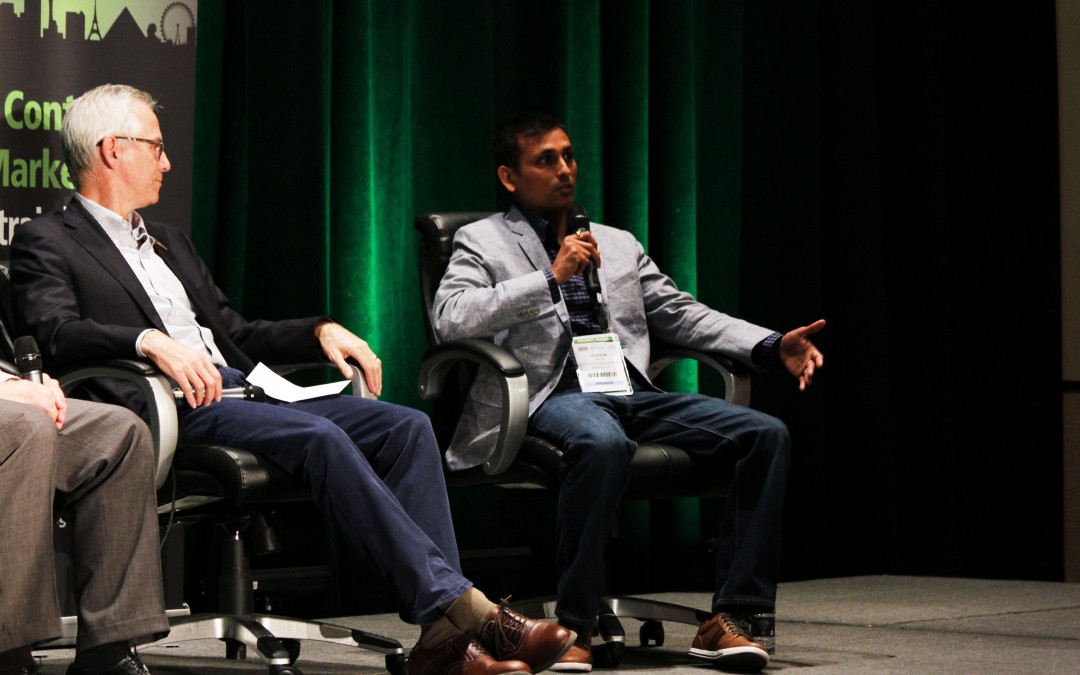At this year’s Content Marketing Conference, some of the most informative and innovative moments of the conference were entirely unscripted. It came as little surprise that combining WriterAccess CEO and Conference Chair Byron White as moderator with Movoto’s Sudhir Sharma, AWeber’s Brandon Olson and Renegade’s Drew Neisser on stage would produce some truly high-quality insights into how to scale up content marketing for big companies. While much of the conversation was fast and furious, there were more than a few sound bites attendees could put to good use. This panel was an intriguing peek into three success stories that incorporated a variety of now-familiar techniques and attitudes.
Focus on the Customer, Not Just Your Message
Neisser, Founder and CEO of NYC agency Renegade, appealed to the narrow message-focused style of marketing that seems so pervasive in the modern business arena, pressing corporate leaders to instead turn their focus on their customers. Once considered an old-fashioned notion in a hyper-advanced marketplace, customers are actively searching for companies that will treat them as individuals, rather than the means to a bottom-line end. Neisser explained that effort is too often poured into only half of the sales equation – attracting notice and compelling initial action through lead generation – and that follow up was sorely lacking by comparison.
If, he cautioned, lead generation is the only method a company is using to further their business, they will lack the depth and range required to weather the frequent storms of industry – any industry. Connecting with your customer base on multiple points provides valuable mooring that will hold even if a single line is compromised, acting as a sort of marketing insurance policy. Neisser also noted that content has a cumulative effect; while a single piece of content may make a splash, consistency in publishing, voice and authority can build into a reliable wave to drive other business concerns.
Watch Customer Behavior, Not Just Metrics
Olson, Content Marketing Manager at AWeber Email Marketing, built on this concept of smart methodology by explaining that some sifting was needed after the leads were generated through their various methods. While overall “headcount” style numbers of hits and similar metrics can seem impressive on reports and papers, he reminded the audience that what truly matters is the actions each individual performs.
Olson encouraged the creation of progressive quality filters within a company; systems that determine which customers are browsing versus buying, which customers are reading versus glancing. These higher-quality leads can be better coaxed inward with the creation of pillars of content for clarity and direction, and personas for better direct audience appeal and natural demographic segmentation.
Use Segmented Content, Not Just Universal
Sharma, Director of Acquisition Marketing at Movoto Real Estate, wove a particularly interesting tale of renovating the company, once a considerably smaller site than its current iteration, into an industry leader and source of authoritative content through a powerful push for content consistency and quality. His company’s unusual hyper-segmented campaign built on the idea that home buyers weren’t necessarily looking for a house, they were looking for a house e a neighborhood, and thus the site built content to appeal to that need. This is a smart, proven idea that incorporates both Neisser’s position of customer-first focus and Olson’s fine-tuning to specific audiences and showing it in action.
Sharma noted the wisdom of using “small” content – such as pieces on a neighborhood’s nearby museums or dog parks – to highlight “big content” that puts a more substantial focus on the neighborhood and houses themselves, and thus nudges readers closer to conversion. These “satellite” pieces of small content, he explained, could incorporate among them a larger variety of sub-keywords and related keywords through interlinking, building a wider SEO net. This self-built content network keeps interested buyers on the site’s properties longer, and makes them more likely to return, thanks to a careful structure of authority on a given neighborhood’s amenities.
The strength of industry-specific conventions like the Content Marketing Conference is easy to see in these informal panels, driven by natural questions and conversational flow to provide true value to the eager listeners around the stage. Short of bugging high-level board meetings or executive C-suites, this might just have been the most valuable cache of inter-industry success tips that a budding business could discover. Don’t miss your chance to listen in on panels like these next year. Register early for your pass to the 2017 Content Marketing Conference!

